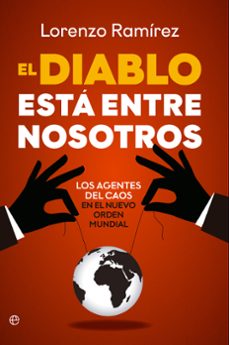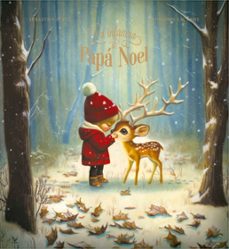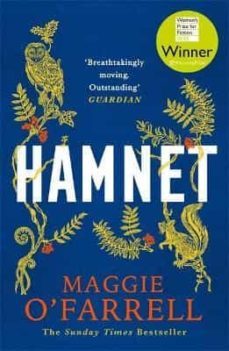Imprescindibles
Ficción
No Ficción
Ciencias y tecnología Biología Ciencias Ciencias naturales Divulgación científica Informática Ingeniería Matemáticas Medicina Salud y dietas Filología Biblioteconomía Estudios filológicos Estudios lingüísticos Estudios literarios Historia y crítica de la Literatura
Humanidades Autoayuda y espiritualidad Ciencias humanas Derecho Economía y Empresa Psicología y Pedagogía Filosofía Sociología Historia Arqueología Biografías Historia de España Historia Universal Historia por países
Infantil
Juvenil
#Jóvenes lectores Narrativa juvenil Clásicos adaptados Libros Wattpad Libros Booktok Libros de influencers Libros de Youtubers Libros Spicy Juveniles Libros LGTBIQ+ Temas sociales Libros ciencia ficción Libros de acción y aventura Cómic y manga juvenil Cómic juvenil Manga Shonen Manga Shojo Autores destacados Jennifer L. Armentrout Eloy Moreno Nerea Llanes Hannah Nicole Maehrer
Libros de fantasía Cozy Fantasy Dark academia Hadas y Fae Romantasy Royal Fantasy Urban Fantasy Vampiros y hombres lobo Otros Misterio y terror Cozy mistery Policiaca Spooky Terror Thriller y suspense Otros
Libros románticos y de amor Dark Romance Clean Romance Cowboy Romance Mafia y amor Romance dramatico Romcom libros Sport Romance Otros Clichés Enemies to Lovers Friends to Lovers Hermanastros Slow Burn Fake Dating Triángulo amoroso
Cómic y manga
Novela gráfica Novela gráfica americana Novela gráfica europea Novela gráfica de otros países Personajes, series y sagas Series y sagas Star Wars Superhéroes Cómics DC Cómics Marvel Cómics otros superhéroes Cómics Valiant
eBooks
Literatura Contemporánea Narrativa fantástica Novela de ciencia ficción Novela de terror Novela histórica Novela negra Novela romántica y erótica Juvenil Más de 13 años Más de 15 años Infantil eBooks infantiles
Humanidades Autoayuda y espiritualidad Ciencias humanas Economía y Empresa Psicología y Pedagogía Filosofía Historia Historia de España Historia Universal Arte Cine Música Historia del arte
Ciencia y tecnología Ciencias naturales Divulgación científica Medicina Salud y dietas Filología Estudios lingüísticos Estudios literarios Historia y crítica de la Literatura Estilo de vida Cocina Guías de viaje Ocio y deportes
eBooks de Enfermedades y plagas
Categorias
Filtros
Del 1 al 3 de 3
BEZZANT, DAVID
Crowood 9781847975164
Among the many challenges facing the contemporary smallholder who keeps livestock and grows his own food, is how to deal with the various pests that are capable of decimating crops, degrading pasture, stealing produce, contaminating animal feed and killing valuable livestock. This book provides the smallholder with the knowledge and the information about the skills to meet this challenge in an effective and humane way.Considers all the major pests faced by smallholders including rats, house and field mice, grey squirrels, moles, rabbits, deer, foxes, mink, wood pigeons, crows and rooks. Discusses each pest in detail, arguing that it is essential for the smallholder to understand their characteristics and behaviour in order to control them successfully. Emphasizes that prevention is better than cure and identifies a variety of measures designed to thwart, rather than kill, pests. Examines both traditional and modern pest control methods. Covers traps, poisons, air rifles, dogs, ferrets, electric fencing, bird scarers, wildlife deterrents and repellents, automatic bird feeders, and polytunnels and cloches. Stresses that smallholders need to adopt a comprehensive pest control programme that complies with current legislation and balances conservation with control. An invaluable and well-illustrated book that provides the smallholder with the knowledge required to deal efficiently and humanely with the various pests that present a constant challenge. Essential reading for small-scale farmers, smallholders and those with large gardens attached to properties in the countryside. Superbly illustrated with 146 colour photographs. David Bezzant has been a smallholder for all his adult life and is an expert on the use of old-fashioned forms of pest control.
Ver más
eBook
NICHOLLS, JEFF
Crowood 9781847974709
If you are a gardener, groundsman, smallholder or farmer and have a mole problem, then this book will be of enormous help to you. Pest-control books normally only devote a paragraph or two to moles and rarely cover the subject in detail. This volume is very different and is probably one of the most comprehensive books ever written on mole trapping. Throughout the book, Jeff Nicholls, a professional mole catcher, reveals his enormous respect for the mole and emphasizes the absolute need to control these rarely seen animals using humane and traditional methods that have been proven to work effectively. At the outset the author discusses the natural history of the mole and explains its characteristics and behaviour, an understanding of which is essential if successful catching techniques are to be applied. He then discusses in detail the traditional and humane methods he uses in different terrain and weather conditions, considers how to locate mole runs, describes all the different types of traps that can be employed and explains how to set the traps correctly.
Ver más
eBook
BASC
Quiller 9781846891663
This comprehensive and practical book, produced specifically for shoots and conservationists, provides a basic guide to all aspects of control. It explains which species can be controlled and by what means. There is detailed guidance on shooting, snaring, trapping, the use of dogs and humane dispatch. The law governing pest species is covered in detail, particularly in regard to the general licences which are frequently misunderstood, occasionally leading to prosecution. Detailed instructions are provided on the effective and legal use of snares and traps with photographic sequences to show how they should be sited and set. This will be invaluable to those who enforce wildlife law and need to distinguish between legal and illegal methods of control.
Ver más
eBook
Del 1 al 3 de 3

![harry potter y el cáliz de fuego (harry potter [ediciones ilustra das interactivas] 4)-j.k. rowling-9788419868497](https://imagessl7.casadellibro.com/a/l/s5/97/9788419868497.webp)
























